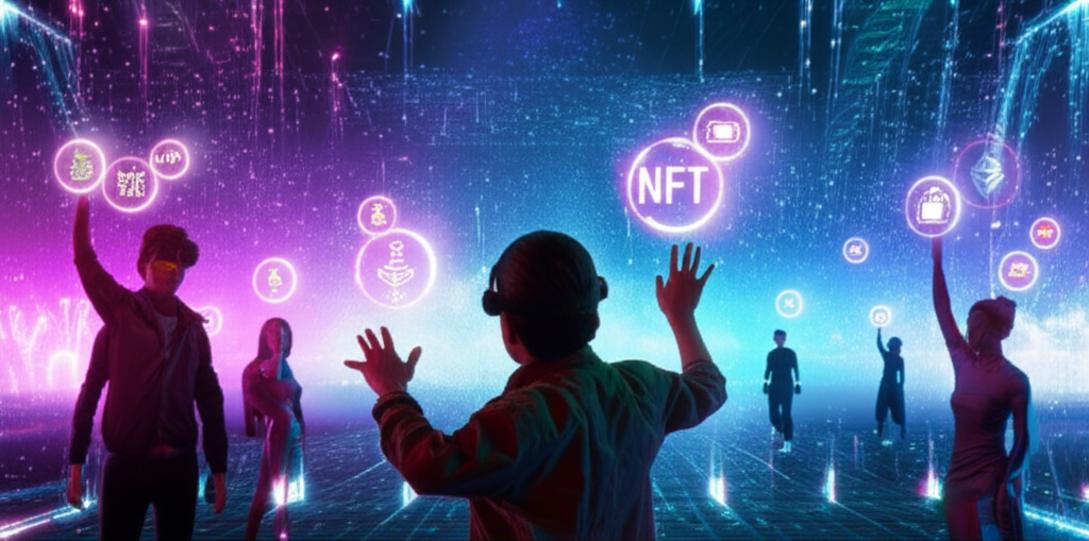Web3 for Influencers: Empowering Content Creators in the Decentralized World

Web3 for Influencers: A New Era of Content Creation
The internet is evolving, and Web3 is at the forefront, promising a more decentralized, user-centric experience. For influencers, this shift presents a wealth of opportunities to connect with their audience, monetize their content, and establish greater ownership over their creations.
What is Web3 and Why Should Influencers Care?
Web3, the third generation of the internet, is built on blockchain technology. This means data is distributed across a network rather than stored in centralized servers, offering greater security, transparency, and user control. For influencers, this translates to:
- Direct Fan Engagement: Bypassing traditional platforms and connecting directly with fans through decentralized social networks and communities.
- Enhanced Content Ownership: Using NFTs (Non-Fungible Tokens) to tokenize content, giving influencers verifiable ownership and control over their digital assets.
- New Monetization Models: Earning revenue through NFT sales, decentralized advertising, and community-driven funding.
- Increased Transparency: Building trust with fans through transparent blockchain-based transactions and community governance.
How Can Influencers Utilize Web3?
Here are several ways influencers can leverage Web3 technologies:
NFTs (Non-Fungible Tokens):
- What: Unique digital assets representing ownership of a piece of content, artwork, or virtual item.
- Why: Allows influencers to monetize their content directly, create exclusive collectibles for fans, and build a stronger brand identity.
- How: Minting NFTs on platforms like OpenSea, Rarible, or Foundation and offering them to fans. See OpenSea’s guide to creating NFTs: https://opensea.io/how-to-create-an-nft.
- Example: An influencer could release a limited-edition NFT of their latest song, artwork, or behind-the-scenes content.
DAOs (Decentralized Autonomous Organizations):
- What: Community-led organizations governed by rules encoded on a blockchain.
- Why: Enables influencers to build stronger communities, share decision-making power with fans, and create more collaborative content.
- How: Launching a DAO on platforms like Aragon or DAOstack and allowing fans to participate in governance decisions.
- Example: An influencer could create a DAO to decide on future content directions, allocate community funds, or vote on partnerships.
Decentralized Social Media Platforms:
- What: Social media platforms built on blockchain technology, offering greater user control and data privacy.
- Why: Allows influencers to connect with fans without relying on centralized platforms, reducing censorship and increasing transparency.
- How: Using platforms like Mirror, Lens Protocol, or Mastodon to share content and interact with fans.
- Example: An influencer could use Mirror to publish blog posts and allow fans to collect them as NFTs.
Tokenized Communities:
- What: Communities that use tokens to incentivize participation and reward members.
- Why: Encourages greater fan engagement, creates a sense of ownership, and provides new ways to monetize community contributions.
- How: Launching a social token using platforms like Rally or Coinvise and rewarding fans for creating content, participating in discussions, or referring new members.
- Example: An influencer could launch a token that grants access to exclusive content, private events, or voting rights in community decisions.
Metaverse Integrations:
- What: Integrating content and experiences into virtual worlds.
- Why: Opens up new avenues for creativity, collaboration, and monetization.
- How: Partnering with metaverse platforms like Decentraland or The Sandbox to create virtual events, experiences, or digital assets.
- Example: An influencer could host a virtual concert in Decentraland or create custom avatars and wearables for The Sandbox.
Challenges and Considerations
While Web3 offers significant opportunities for influencers, it’s important to be aware of the challenges:
- Complexity: Understanding blockchain technology and navigating the Web3 ecosystem can be complex.
- Volatility: Cryptocurrency and NFT markets can be highly volatile, impacting the value of digital assets.
- Security Risks: Web3 platforms are susceptible to security breaches and scams, requiring careful due diligence.
- Regulation: The regulatory landscape for Web3 is still evolving, creating uncertainty for businesses and users.
Tools and Platforms for Influencers in Web3
Here are some popular tools and platforms that can help influencers navigate the Web3 landscape:
- NFT Marketplaces: OpenSea, Rarible, Foundation, SuperRare.
- DAO Platforms: Aragon, DAOstack, Snapshot.
- Decentralized Social Media: Mirror, Lens Protocol, Mastodon.
- Social Token Platforms: Rally, Coinvise.
- Web3 Analytics: Nansen, Dune Analytics.
- Ebiz: While Ebiz is primarily known for POS solutions, it can play a role in managing inventory and sales of physical merchandise related to an influencer’s brand in conjunction with their Web3 activities.
Getting Started with Web3
Here are some steps influencers can take to start exploring Web3:
- Educate Yourself: Learn about blockchain technology, NFTs, DAOs, and other Web3 concepts.
- Experiment with Platforms: Try out different Web3 platforms and tools to see what works best for you.
- Engage with the Community: Connect with other Web3 enthusiasts and influencers to learn from their experiences.
- Start Small: Begin by launching a small NFT collection or creating a simple DAO to test the waters.
- Be Transparent: Communicate openly with your fans about your Web3 activities and the risks involved.
The Future of Influencers in Web3
Web3 has the potential to transform the influencer landscape, empowering content creators with greater control, ownership, and monetization opportunities. By embracing these new technologies, influencers can build stronger communities, create more engaging content, and thrive in the decentralized web. As the Web3 ecosystem continues to evolve, influencers who are willing to experiment and adapt will be best positioned for success.
Who: Influencers and content creators.
What: Utilizing Web3 technologies to enhance content creation, monetization, and fan engagement.
When: Now, as Web3 technologies are rapidly developing and becoming more accessible.
Where: On decentralized social media platforms, NFT marketplaces, and metaverse environments.
Why: To gain more control over content, build stronger communities, and explore new revenue streams.
How: Through NFTs, DAOs, tokenized communities, and metaverse integrations.
Visit Pos Ebiz to explore solutions for managing physical merchandise and integrating online and offline sales: https://www.phanmempos.com/cua-hang

